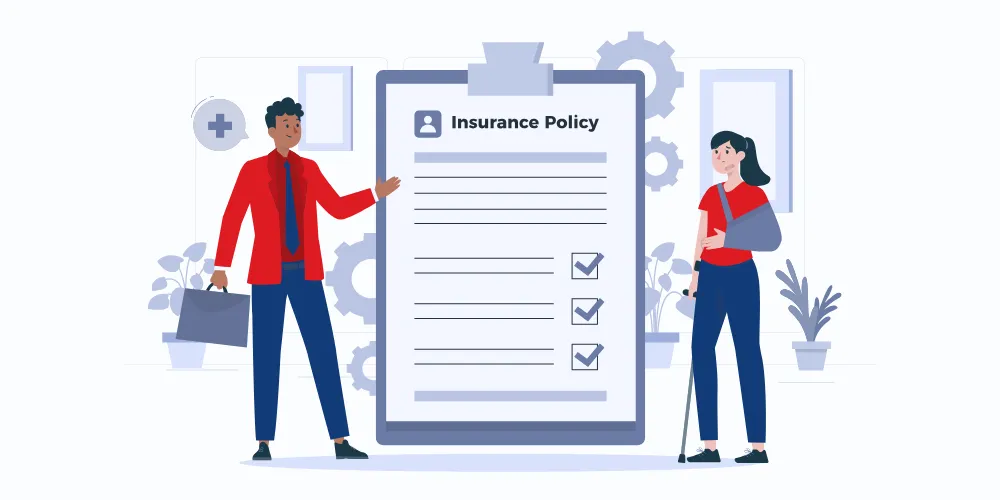Both approaches have their merits. The top-down approach is efficient for quick decision-making and ensuring alignment with organizational goals, while the bottom-up approach fosters creativity, employee empowerment, and local insights. The best choice depends on the situation, with bottom-up being ideal for innovation and top-down for control and efficiency.
Top-Down vs Bottom-Up Approaches
- Aishwarya Govalkar
- Apr 23, 2024
- 4 min read
- Last updated on Jan 03, 2025
Introduction
How do organizations turn ambitions into actionable goals? The answer lies in the method they choose—top-down approach or bottom-up approach.
A top-down approach flows from leadership, with strategic objectives streaming to teams and individuals. This approach ensures alignment with the company’s vision but can risk overlooking frontline insights.
In contrast, the bottom-up approach encourages employees at all levels to contribute to goal-setting, promoting innovation and buy-in. While this approach taps into grassroots creativity, it may sometimes struggle with aligning broader organizational priorities.
Both top-down approach and bottom-up approach have their strengths and challenges, and the choice between them often depends on the organization's structure, culture, and objectives. In this blog, we will help you decide which approach—or perhaps a hybrid—is the best fit for driving your team’s success.
What is a top-down approach?
The top-down approach is a hierarchical method of management and planning where decisions and strategies originate at the leadership level and flow downward to the rest of the organization. In this structure, senior executives set the overarching goals, priorities, and strategies, which are then broken into specific objectives and tasks for teams and individuals.
With leadership defining objectives, the organization's efforts remain focused on strategic priorities. However, this approach often centralizes decision-making, which can limit input from employees at lower levels. While it offers efficiency and clarity, the top-down approach may overlook valuable insights from the frontline workforce.
This method works best for organizations requiring strict control, such as those in regulated industries or during crisis management. The top-down approach creates a unified direction that promotes cohesion and efficient execution but requires a balance with employee engagement for the best outcomes.
Benefits of Top-Down Approach
a) Clarity of goals and objectives
The top-down approach ensures well-defined goals and objectives established by top-level management. This provides a unified direction for the organization, making sure everyone is aligned and working toward the same strategic outcomes. It simplifies management by centralizing decision-making, allowing for quicker implementation of changes.
b) Streamlined Communication
With a centralized flow of information, the top-down approach minimizes misunderstandings and ensures that messages are consistently communicated across all levels of the organization. This structured communication process gives clarity and reduces errors, enabling teams to stay informed and focused on organizational priorities.
c) Efficient Resource Allocation
The top-down approach enables leadership to allocate resources strategically, ensuring they are directed toward the most critical objectives. By having a clear overview, upper management can prioritize projects and avoid unnecessary duplication of efforts, maximizing productivity.
d) Encouraging collaboration
Clear objectives set at the top foster coordination and teamwork among departments and teams. The top-down approach encourages interdepartmental collaboration, driving innovation. Shared goals motivate employees to work cohesively, improving organizational performance.
e) Better control and oversight
With centralized decision-making, the top-down approach gives leaders enhanced control over organizational objectives and processes. This structure allows for swift responses to changes in the business environment and ensures organized workflows. Central oversight reduces confusion and errors, making operations smoother and more predictable.
By combining clarity, communication, resource optimization, collaboration, and control, the top-down approach creates a structured framework that drives efficiency and alignment across the organization.
Drawbacks of top-down approach
a) Dependance on upper management
With a top-down approach, organizations become more dependent on upper management for goal-setting and decision-making, which can be problematic if upper management changes or leaves the organization.
However, it could also lead to a lack of ownership and accountability for the goals among lower-level employees, who may feel detached from the decision-making process and need more motivation to achieve the goals set by top management. As decision-making is restricted to top management, it could also lead to a lack of innovation and creativity.
b) Lack of employee engagement
One of the main downsides of the top-down approach is that it can lead to a lack of employee empowerment. As decisions are made at the top level, lower-level employees may feel that they need more control over their work and that their input is not valued. This can lead to low morale and engagement and a lack of commitment to the organization's goals.
c) Lack of organizational agility
Organizational agility emphasizes that centralized decision-making and hierarchy can create a rigid structure that is not equipped to respond quickly and effectively to the changes in the business environment. This inability to adapt can lead to missed opportunities, a decline in competitiveness, or problems responding to customer needs or market trends.
What is a bottom-up approach?
A bottom-up approach is a strategy that begins with individual components or lower-level details to address a larger system or problem. It focuses on collaboration and inclusivity, involving team members or stakeholders at the ground level. This approach empowers individuals to contribute insights, which are then synthesized into comprehensive solutions.
In business or technology, a bottom-up approach often starts with user needs or smaller tasks to develop strategies or systems. For example, software development teams may gather input from end-users to design products that meet real-world needs. In organizational management, employees may propose solutions, fostering innovation and ownership.
Unlike top-down methods, where directives flow from leadership to execution, the bottom-up approach builds solutions organically. By valuing input from all levels, it creates more inclusive, effective, and scalable outcomes tailored to real-world challenges.
Benefits of Bottom-Up Approach
a) Greater buy-in and commitment
Employees involved in the decision-making process are more likely to accept and support outcomes. This leads to increased commitment, better execution, and stronger performance. With a sense of ownership, employees go above and beyond to ensure success, boosting productivity and engagement.
b) Enhanced creativity and innovation
Encouraging input from all organizational levels fosters creativity. Employees feel empowered to contribute unique ideas and solutions, often leading to innovative outcomes. Their proximity to everyday challenges enables them to identify problems and suggest solutions that top management might overlook. This results in more diverse and effective ideas, driving innovation in products, processes, and services.
c) Better decision-making
The bottom-up approach ensures decisions are well-informed and comprehensive by incorporating employee feedback from various levels. Employees who interact with customers and understand day-to-day operations offer valuable insights, leading to more efficient problem-solving and quicker adaptation to market changes. This process creates decisions that resonate with the team, improving implementation.
d) Employee Empowerment and Local Insights
By giving employees a voice, the bottom-up approach enhances empowerment. Local insights from employees on the ground help identify issues and opportunities quickly, allowing organizations to respond effectively to challenges and continuously improve their operations.
Drawbacks of bottom-up approach
a) Inconsistency
Inconsistency refers to the potential for goals and actions at the individual or departmental level to be misaligned or contradictory to the organization's overall goals and strategy.
This can occur when decisions are made at the lower levels of the organization without proper consideration of how they fit into the larger picture. The lack of consistency can lead to confusion and a lack of progress toward the organization's overall objectives.
b) Less control
In a bottom-up approach to business goal setting, less control means that goals and actions at the individual or departmental level are beyond the organization's control. This can happen when lower-level goals and actions are developed and implemented without proper oversight or guidance from senior management.
The lack of control can result in poor decision-making, misaligned goals, and an inability to measure progress toward the organization's overall goals. Furthermore, it can create an environment where individuals or departments pursue goals that are not aligned with the organization's larger goals and strategy, resulting in a lack of resources and wasted efforts.
c) Lack of vision
Lack of vision refers to the potential for goals and actions at the individual or departmental level to be narrow in scope and not aligned with the overall vision and strategy of the organization. This can occur when goals and actions are developed and implemented at the lower levels of the organization without proper guidance or input from senior management.
As a result, the goals and actions of individual or departmental level can be focused on short-term, specific objectives and not aligned with the overall long-term vision of the organization.
This approach can lead to a lack of progress toward achieving the organization's overall goals and make it difficult for the organization to adapt to changes in the market or industry. Additionally, it can make it difficult for the organization to align its employees' efforts and resources toward achieving a common vision and goals.
Which approach is best for your organization?
Depending on your goals and resources, one approach may be more suitable. Whether you use top-down or bottom-up, you can take a few practical steps to ensure successful implementation. For top-down approaches, management should communicate their vision and strategies.
Likewise, creating supportive teams is important to allow employees to participate in decision-making with the bottom-up approach. Both ways require open lines of communication and setting key performance indicators that help track progress and measure success.
Conclusion
When setting goals, choosing the right method is crucial for success. Both methods are relatively straightforward - top-down starts with the broad picture and works down to the details, while bottom-up begins with specific details and builds to the bigger picture.
The top-down approach is great for outlining clear objectives and fostering collaboration among team members. In contrast, the bottom-up approach is better for getting input from every level of the organization and creating buy-in from the team.
Ultimately, the best goal-setting method for your organization will depend on your specific circumstances and needs. It's always good to be familiar with both top-down approach and bottom-up approach and use the one that aligns well with your organization.
Frequently Asked Questions
Top-down vs. bottom-up approach. Which is best?
What is the top-down approach used for?
The top-down approach is used for centralized decision-making, ensuring consistency, clear direction, and alignment with leadership goals in large organizations.
What is the bottom-up approach used for?
The bottom-up approach is used for encouraging collaboration, gathering insights from all levels, and nurturing innovation, often resulting in more adaptive and creative solutions.





